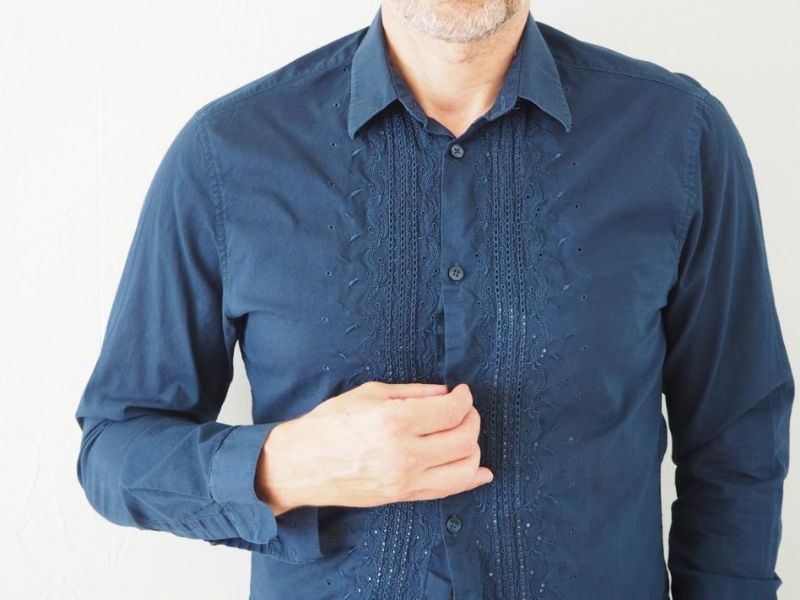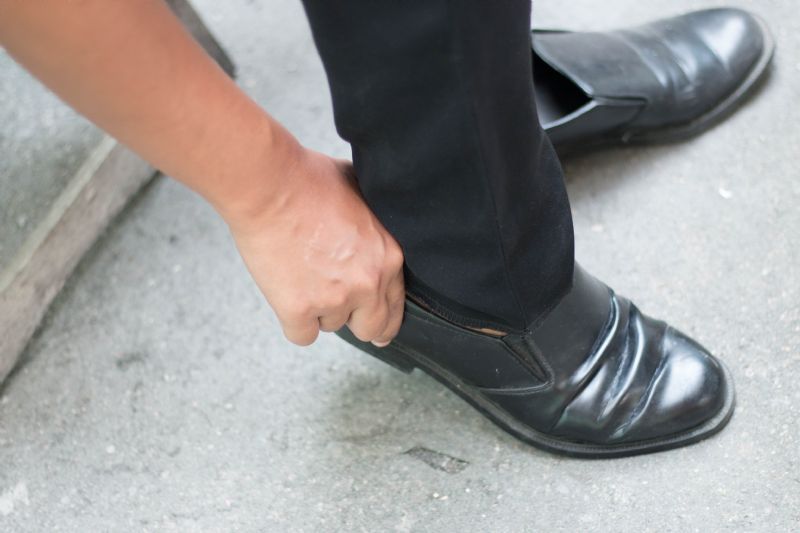 Written by Martin Jansen, OT
Written by Martin Jansen, OT
There are many situations that could make it necessary to live one-handed, either temporarily or for an extended period of time. Reasons can be as diverse as a person sustaining an arm or hand fracture, undergoing a shoulder replacement, receiving a medical amputation, or losing control of a limb due to a nerve injury, brain injury, or stroke.
While the reasons behind a loss of arm function can vary greatly, in many cases, the lifestyle solutions are similar.
Below, we will expand on a handful of these potential difficulties, and provide practical tips to make navigating life with one working arm less difficult!
Nail grooming with one hand can present quite a challenge, requiring dexterity and precision. The task becomes even more daunting when it comes to trimming each finger's nails, including the often-neglected thumbs. However, there is a glimmer of relief for individuals facing this predicament, as one-handed nail clippers have emerged as a solution. Designed specifically to accommodate those with limited hand mobility, these specialized tools provide the necessary functionality and ease of use to ensure that every nail receives the attention it deserves. With their innovative design, one-handed nail clippers offer a renewed sense of independence and convenience for individuals who strive for well-groomed nails with just one hand. The Press-On One-Handed Nail Clipper is our favorite. Watch the video above to see why!
When it comes to bathing the non-affected, working arm, individuals can place a wet washcloth atop their thigh, and rub their arm against the washcloth.
To wash the axilla area (otherwise known as the armpit), bathers can bend their functional arm to bring the wash cloth up into the armpit area. Note: this method works best if the individual is moderately flexible, and has good range of motion in their wrist.
If reaching the armpit is too difficult or if flexibility is limited, try a long-handled sponge or body washer!

If you still have some hand strength in your affected arm, try this process for drying off after a bath, shower, or swim: sling the towel over one shoulder and down the back, holding both ends of the towel with either hand. Pull the towel back and forth across the body until the body is dry.
Is one arm or hand unable to provide assistance? Try slinging the towel over the back, then reach behind the back to pull it down - first on one side, then the other, using your working arm.
For a longer term solution, sew a small loop to one end of your towel, and mount a hook on the bathroom wall. Place the towel onto the hook, then stand in front of it, moving the body side to side while holding the other end of the towel taut.
If available, the use of a hairdryer, directed at the body parts that need to be dried, can be an easy and soothing method of removing water! Try mounting the hair dryer to a supportive stand for a hands-free experience.

Putting on shirts is typically best accomplished by beginning with the affected arm.
Depending on the amount of control an individual has of their affected arm, it could be possible for them to hold up their affected hand, and to start by pulling the shirt sleeve over and onto the arm. If this is not possible, try leaning slightly forward with the affected arm down as much as possible, being careful not to strain or over-extend. Leaning forward creates space to slide the shirt over the hand, and then up the arm.
Once the shirt is pulled up toward the shoulder, an individual can pull it over their head, and then place the non affected arm into the other sleeve, gently tugging the shirt down around their body until it is on.
Button-down shirts have the added challenge of buttons that need to be fastened! This type of shirt can be pulled on around the wearer’s back, and closed in the front. If the shirt has only two or three buttons placed closer to the neck, put it on as you would any other non-buttoning shirt (see above).
If your arm and/or hand are expected to have limited-to-no-mobility for an extended period of time, modifications to shirts can be made, such as sewing the buttons to the front of the button hold, and replacing the closure with small pieces of Velcro.
Many people also find button hooks fairly easy to use, as this helpful tool facilitates the closing of buttons in a way that requires only one hand.
For women, bras present their own set of problems. Fastening them before putting them on will allow the user to don them like a t-shirt. Alternatively, individuals can use front-closing bras, or make use of an assistive bra fastener.
For individuals with longer-term recovery or permanent injuries, modifying a bra for easy on-and-off can be accomplished by sewing an extension onto one side of the bra back. For easy clasping of the bra, this extension should have a hook piece of Velcro at its attachment point, and a Velcro loop at the place where the clasp is attached. Sewing a D-ring onto one side of the back will allow the user to loop the extension strap through the D-ring and close it on itself, avoiding the tricky hook and loop clasp completely!

Tying shoes is another difficult task to do with one hand. However, one handed shoelace tying is possible! It only requires re-lacing the shoes, and tying off in a single-loop closure.
If lacing your shoes doesn’t sound appealing, individuals can replace their standard shoelaces with elastic shoelaces, which require tying just once. Doing this effectively creates slip-on shoes from what were previously lace-up shoes.
Coil elastics also provide an easy way to tighten shoes, and can be a fun addition to any set of sneakers.
Whether you are in recovery or learning to embrace the after effects of an injury, performing everyday tasks with limited arm function is challenging - but not impossible. With the right planning and a little creativity, you can (and will!) adapt to your body's capabilities, and continue to live an independent, joyful life.
If you liked this article, you might also like A Caregiver's Guide to Preventing Falls in the Home!

Martin Jansen was born in the Netherlands. After graduating from the Occupational Therapy college in Amsterdam he has worked throughout his 31 year career in acute rehab hospitals, acute care hospitals as well as outpatient services with a wide variety of illnesses and disabilities. He continues to work full time as an Occupational Therapist. Martin is passionate about helping patients regain their independence as much and as quickly as possible. He has received additional training in the use of medical equipment and enjoys the opportunity to write about his experience and help others problem solve any difficulties they experience as a result of some form of physical limitation.